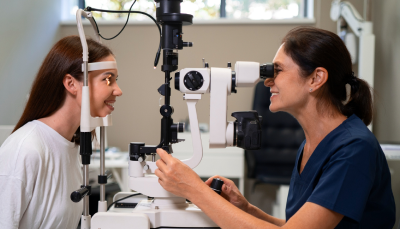
When it comes to delivering perfect eye vision and quality care, knowledge only isn’t enough. The best optometrists are people who combine theory with practical ability, precision with empathy. At Itees College of Health Science, Malappuram, we understand that a properly-rounded optometry graduate is someone who no longer only excels in lecturers however also in clinical practic, communication, and diagnostic precision.
Whether you are a first-year student or approaching your final semester, this blog will guide you through the top skills every optometry student should have to check eyesight and more.
Understanding and handling eye test instruments is the inspiration of medical fulfillment in optometry. You should understand how to use them correctly to make sure accurate diagnostics and patient comfort.
Instruments You Should Be Confident With:
A hands-on understanding of these tools enhances your ability to check eyesight effectively and with precision.
As an optometrist, you'll often deal with various forms of eye test report samples. Being able to read, analyze, and explain these reports to patients and fellow healthcare professionals is essential.
Key Areas to Focus On:
Mastering report interpretation not only builds confidence but additionally guarantees quality care and well timed decision-making.
A Basic Eye Test Flow Includes:
This step-by-step process ensures nothing is missed when you check eyesight or diagnose underlying conditions.
Empathy, patience, and clarity in communication are just as crucial as technical knowledge. You'll interact with a variety of patients and must be able to guide them through their eye test instruments experience without confusion or fear.
Communication Tips:
Your capability to talk nicely complements patient consideration and compliance, leading to higher outcomes.
With the upward thrust of generation, optometry is now heavily reliant on digital diagnostics just like the opto eye test, which captures extremely-widefield photographs of the retina in seconds. As a student, being tech-savvy is now not optionally available.
Skills You Should Develop:
Staying updated with digital tools will set you apart in a fast-evolving healthcare field.
Whether you are in a hectic hospital, private clinic, or optical retail area, the potential to control time and multitask efficiently is important.
Practice Scenarios:
These skills are best discovered through internships and sensible publicity—something we prioritize in the optometry application at Itees College.
Beyond clinical practice is non-negotiable. Patients trust with optometrists with their vision, a responsibility that needs honesty, confidentiality, and adherence to clinical tips.
Ethical Responsibilities Include:
The world of optometry is changing, new lenses, surgical techniques, and diagnostic tools emerge every year. Cultivating a dependency of non-stop gaining knowledge guarantees you remain relevant and competent.
Ways to Stay Updated:
Optometry is more than issuing prescriptions, it is a blend of technological practice, generation, and compassion. At Itees College of Health Science, Malappuram, we’re committed to helping students acquire those essential competencies, from using eye examination instruments to interpreting an eye test report sample with confidence.
Whether you're just starting your course or nearing the end of your journey, focus on developing these core competencies. They will not only make you a better optometrist but also a trusted healthcare provider in your field.